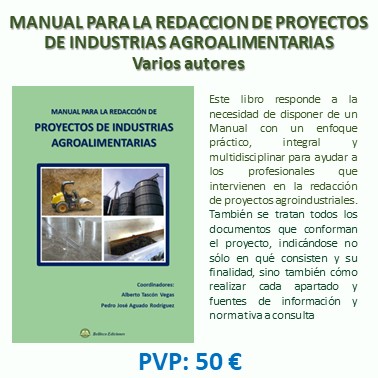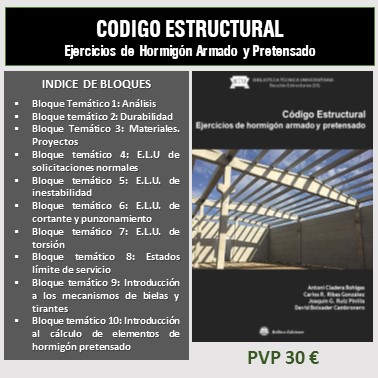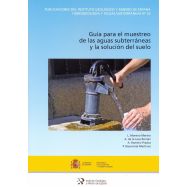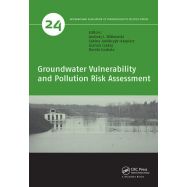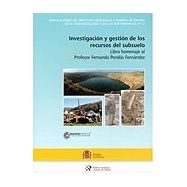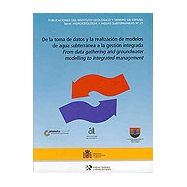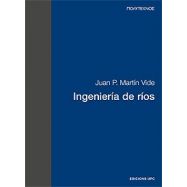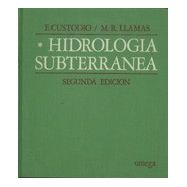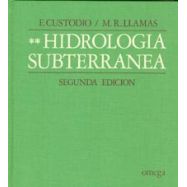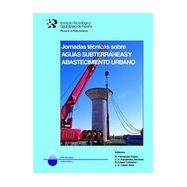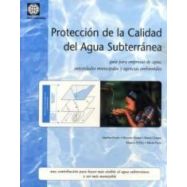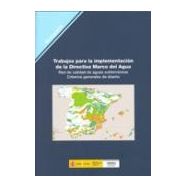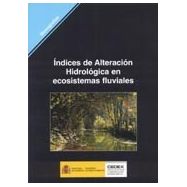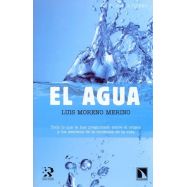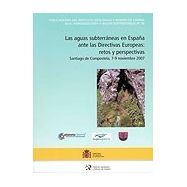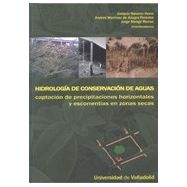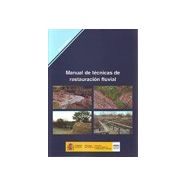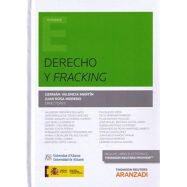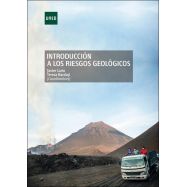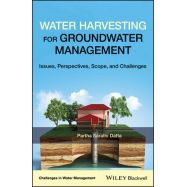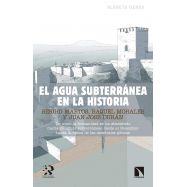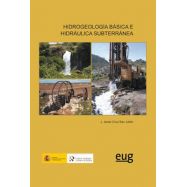Ningún producto
Materias
- BELLISCO EDICIONES. Nuestro Fondo Editorial
- FONDOS EDITORIALES EN DISTRIBUCION
- LIBROS TECNICOS EN INGLES
- ARQUITECTURA - URBANISMO
- AUTOMOCION - MOTORES - VEHICULOS
- AVIONICA - AERONAUTICA
- CALIDAD - EMPRESARIALES - GESTION
- CIENCIAS EXACTAS - MATEMATICAS
- CIENCIAS NATURALES Y APLICADAS
- CIENCIAS DE LA TIERRA - INGENIERIA DEL SUELO
- DICCIONARIOS TECNICOS
- ESTRUCTURAS - CONSTRUCCION
- FORMACION PROFESIONAL
- HIDRAULICA - INGENIERIA SANITARIA - AGUAS
- INGENIERIA CIVIL - OBRAS PUBLICAS
- INGENIERIA MECANICA E INDUSTRIAL
- INSTALACIONES . GENERALES, EN EDIFICACION E INDUSTRIALES
- MATERIALES
- MEDIO AMBIENTE
- NORMATIVA
- OPOSICIONES
- PREVENCION DE RIESGOS LABORALES
- PROGRAMAS INFORMATICOS DE CALCULO
- TECNOLOGIA DE LOS ALIMENTOS: Industrias: Conservación, envasado y cadenas alimentarias
- TELECOMUNICACIONES - INFORMATICA - TECNOLOGIA DE LA INFORMACION
- OUTLET DE BELLISCO: Descuentos de hasta el 80%
- RELIGION, TEOLOGIA, MORAL Y ESPIRITUALIDAD
- VARIOS
- OFERTAS
- PROMOCIONES
- NEWSLETTER
- CATEGORIAS DESTACADAS
- ULTIMAS NOVEDADES BELLISCO
- ARQUITECTURA SOSTENBILE
- URBANISNO
- MATEMATICAS EN GENERAL
- AGRONOMOS-AGRICULTURA-FORESTALES
- ELECTROMAGENTISMO-ELECTRONICA-ELECTRICIDAD
- INGª Y MECÁNICA DEL SUELO. CIMENTACIONES
- TOPOGRAFIA, FOTOGRAMETRÍA, GEODESIA
- EDIFICACION
- ANALISIS DE ESTRUCTURAS, RESISTENCIA DE MATERIALES, ELASTICIDAD, CALCULO MATRICIAL
- OFICIOS VARIOS
- ABASTECIMIENTO Y DISTRIBUCION DE AGUA
- PUENTES
- TUNELES Y OBRAS SUBTERRANEAS
- MAQUINAS Y MECANISMOS
- SOLDADURA
- CLIMATIZACION
- INSTALACIONES DE AGUA
- INSTALACIONES ELECTRICAS CIENCIA E INGENIERIA DE MATERIALES
- ENERGIAS RENOVABLES
- DESARROLLO SOSTENIBLE
- INFORMATICA-SISTEMAS-FORMACION-PROGRAMAS
-
LABORATORY MANUAL FOR GROUNDWATER, WELLS, AND PUMPS
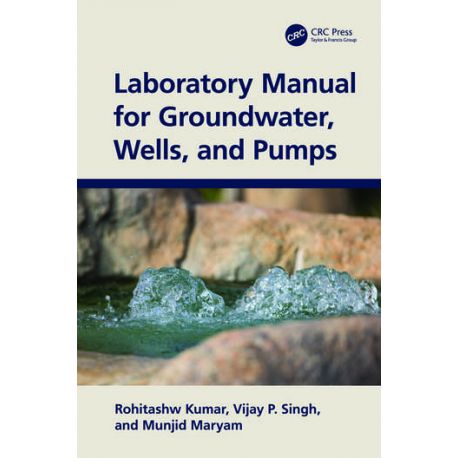 Ver más grande
Ver más grande Referencia: Código 10550
Mayo de 2023 - Rohitashw Kumar.. - Refª 10550
Rohitashw Kumar, Vijay P. Singh, Munjid Maryam
Mayo de 2023 Páginas: 234 Tapa dura
Código 10550 ISBN/EAN: 9781032334332
DESCRIPTION:
The over-exploitation of groundwater and marked changes in climate over recent decades has led to unacceptable declines in groundwater resources. Under the likely scarcity of available water resources in the near future, it is critical to quantify and manage the available water resources. With increasing demand for potable water for human consumption, agriculture, and industrial uses, the need to evaluate the groundwater development, management, and productivity of aquifers also increases. Laboratory Manual for Groundwater, Wells, and Pumps serves as a valuable resource and provides a multi-disciplinary overview for academics, administrators, scientists, policymakers, and professionals involved in managing sustainable groundwater development programs. It includes practical guidance on the measurement of groundwater flow, soil properties, aquifer properties, wells and their design, as well as the latest state-of-the-art information on pumps and their testing, and groundwater modeling.
Features:
- Covers basics of groundwater engineering, advanced methodologies, and their applications and groundwater modeling
- Examines groundwater exploration, planning and designing, and methods for formulating strategies for sustainable management and development
- Serves as a reference for practitioners on practical applications and frequently occurring issues of groundwater investigations, development, and management.
TABLE OF CONTENTS:
Part One: Measurement of Groundwater Flow. 1. Verification of Darcy's law. 2. Estimating ground water balance and study of artificial ground water recharges structures. 3. Water table contour maps. Part Two: Measurement of Soil Properties. 4. Sieve analysis for gravel and well screens design. Part Three: Measurement of Aquifer Properties. 5. Estimation of specific yield and specific retention. 6. Evaluation of hydraulic properties of aquifer by Theis method. 7. Evaluation of hydraulic properties of aquifer by Cooper-Jacob Method. 8. Evaluation of hydraulic properties of aquifer under unstready state condition by Chow method. 9. Evaluation of hydraulic properties of aquifer by recovery test. 10. Study of leaky and non leaky aquifers. Part Four: Wells and Their Design. 11. Testing of well screen. 12. Study of different drilling equipments and drilling of a tube well. 13. Measurement of water level and drawdown in pumped wells. 14. Well design under confined and unconfined conditions. 15. Study of well losses and well efficiency. 16. Computation of interference of wells. Part Five: Pumps and Their Testing. 17. Study of radial flow, mixed flow, multistage centrifugal pumps, turbine, propeller and other pumps. 18. Study of installation of centrifugal pump; testing of centrifugal pump and study of cavitations. 19. Study of performance characteristics of hydraulic ram. 20. Study of Deep well Turbine and Submersible pumps. 21. Analysis of pumping test data. Part Six: Groundwater Modeling. 22. Groundwater computer simulation models. Glossary. Appendix.
AUTHORS:
Dr. Rohitashw Kumar (B.E., M.E., Ph. D.) is Associate Dean and Professor in College of Agricultural Engineering and Technology, Sher-e-Kashmir University of Agricultural Sciences and Technology of Kashmir, Srinagar, India. He worked as Professor Water Chair (Sheikkul Alam ShiekhNuruddin Water Chair), Ministry of Jal Shakti, Government of India, at the National Institute of Technology, Srinagar (J&K) for three years. He is also Professor and Head, Division of Irrigation and Drainage Engineering. He obtained his Ph.D. degree in Water Resources Engineering from NIT, Hamirpur, and Master of Engineering Degree in Irrigation Water Management Engineering from MPUAT, Udaipur. He got leadership award in 2020, Special Research award in2017 and Student Incentive Award-2015 (Ph.D. Research) from the Soil Conservation Society of India, New Delhi. He also got the first prize in India for best M. Tech thesis in Agricultural Engineering in 2001. He has published over 125 papers in peer-reviewed journals, more than 25 popular articles, 4 books,2 practical manuals, and 25 book chapters. He has guided two Ph.D students and 16 M.Tech in soil and water engineering. He has handled more than 12 research projects as a principal or co-principal investigator. Since 2011, he has been Principal Investigator of ICAR- All India Coordinated Research Project on Plastic Engineering in Agriculture Structural and Environment Management.
Prof. Vijay P. Singh is a Distinguished Professor, a Regents Professor, and the inaugural holder of the Caroline and William N. Lehrer Distinguished Chair in Water Engineering at the Texas A&M University. His research interests include surface-water hydrology, groundwater hydrology, hydraulics, irrigation engineering, environmental quality, water resources, water-food-energy nexus, climate change impacts, entropy theory, copula theory, and mathematical modeling. He graduated with a B.Sc. in Engineering and Technology with emphasis on Soil and Water Conservation Engineering in 1967 from the U.P. Agricultural University, India. He earned an MS in Engineering with specialization in Hydrology in 1970 from the University of Guelph, Canada; a Ph.D. in Civil Engineering with specialization in Hydrology and Water Resources in 1974fromthe Colorado State University, Fort Collins, USA, and a D.Sc. in Environmental and Water Resources Engineering in 1998 from the University of the Witwatersrand, Johannesburg, South Africa. He has published extensively on a wide range of topics. His publications include more than 1365 journal articles, 32 books, 80 edited books, 305 book chapters, and 315 conference proceedings papers. For his seminar contributions he has received more than 100 national and international awards, including three honorary doctorates. Currently he serves as Past President of the American Academy of Water Resources Engineers, the American Society of Civil Engineers (ASCE), and previously he served as President of the American Institute of Hydrology and Cahir, Watershed Council, ASCE. He is Editor-in-Chief of two book series, three journals, and serves on the editorial boards of more than 25 journals. He has served as Editor-in-Chief of three other journals. He is a Distinguished Member of the American Society of Civil Engineers, an Honorary Member of the American Water Resources Association, an Honorary Member of International Water Resource Association, and a Distinguished Fellow of the Association of Global Groundwater Scientists. He is a fellow of five professional societies. He is also a fellow or member of 11 national or international engineering or science academies.
Er Munjid Maryam did B.Tech in Agricultural Engineering and M.Tech in Soil and Water Engineering from College of Agricultural Engineering and Technology, SKUAST-Kashmir. Currently, she is pursuing a Ph. D in Soil and Water Engineering from College of Agricultural Engineering and Technology, SKUAST-K. She has published various research and review articles in the area of water resources engineering. Furthermore, she is the recipient of the Best Speaker Award at the National Environment Youth Parliament-2022 held at New Delhi, India.
DESCRIPCION:
La sobreexplotación de las aguas subterráneas y los marcados cambios en el clima en las últimas décadas han llevado a una disminución inaceptable de los recursos de aguas subterráneas. Ante la probable escasez de recursos hídricos disponibles en un futuro próximo, es fundamental cuantificar y gestionar los recursos hídricos disponibles. Con el aumento de la demanda de agua potable para consumo humano, agricultura y usos industriales, también aumenta la necesidad de evaluar el desarrollo, la gestión y la productividad de las aguas subterráneas de los acuíferos. Manual de laboratorio para aguas subterráneas, pozos y bombassirve como un recurso valioso y proporciona una visión general multidisciplinaria para académicos, administradores, científicos, formuladores de políticas y profesionales involucrados en la gestión de programas de desarrollo sostenible de aguas subterráneas. Incluye una guía práctica sobre la medición del flujo de agua subterránea, las propiedades del suelo, las propiedades de los acuíferos, los pozos y su diseño, así como la información más reciente sobre bombas y sus pruebas, y el modelado de aguas subterráneas.
Características:
Cubre conceptos básicos de ingeniería de aguas subterráneas, metodologías avanzadas y sus aplicaciones y modelado de aguas subterráneas.
- Examina la exploración, la planificación y el diseño de aguas subterráneas, y los métodos para formular estrategias para la gestión y el desarrollo sostenibles.
- Sirve como referencia para los profesionales sobre aplicaciones prácticas y problemas frecuentes de investigaciones, desarrollo y gestión de aguas subterráneas.
Tabla de contenido
TAMBIEN LE PUEDE INTERESAR
- 57,00 €
- 15,00 €
- 164,00 €
- 65,00 €

